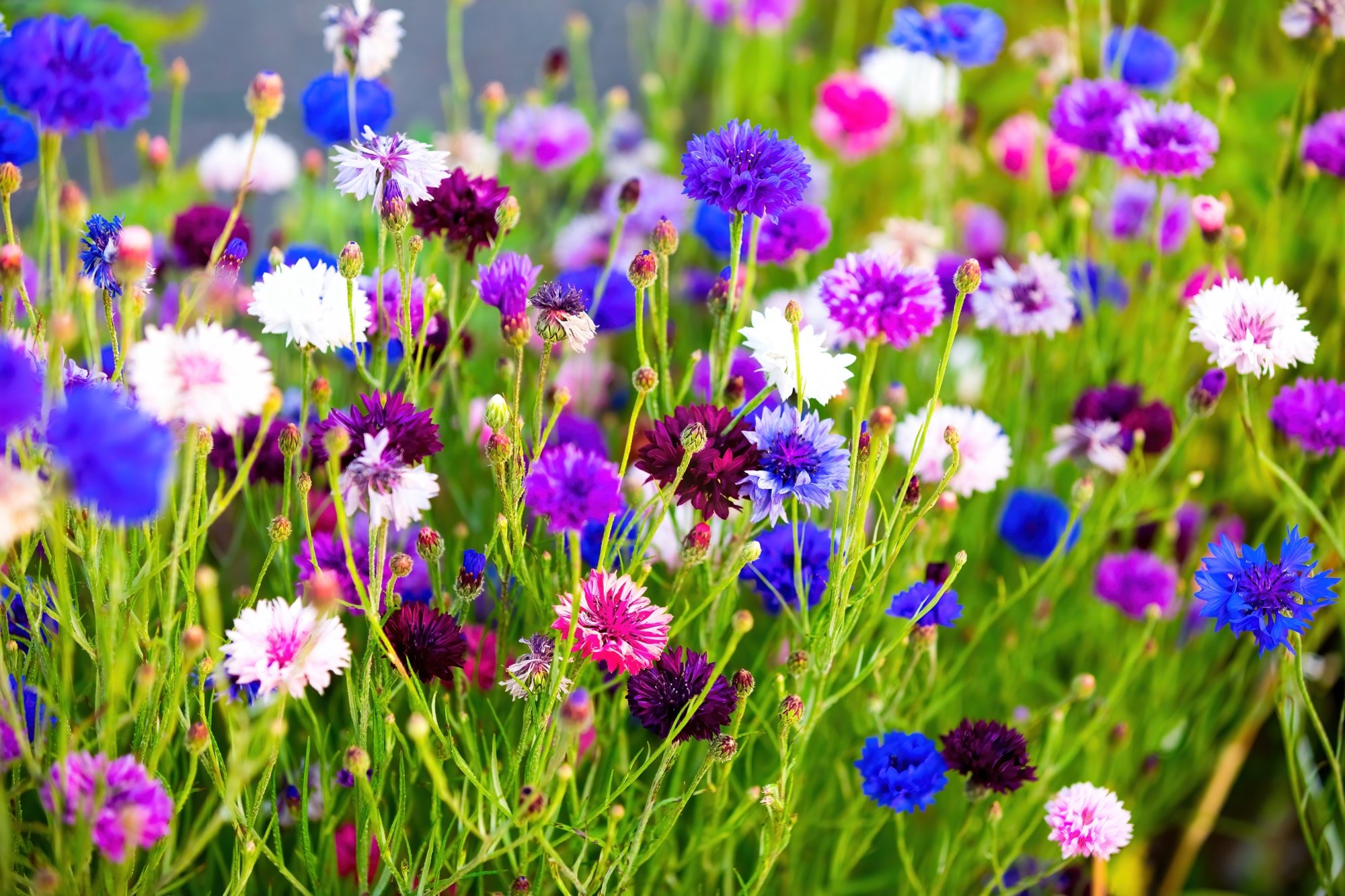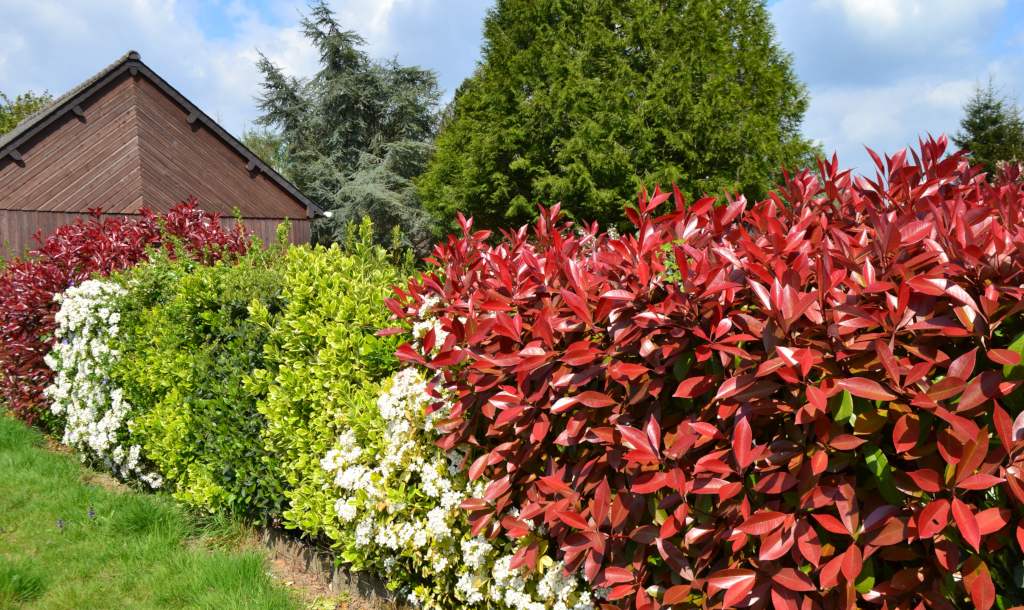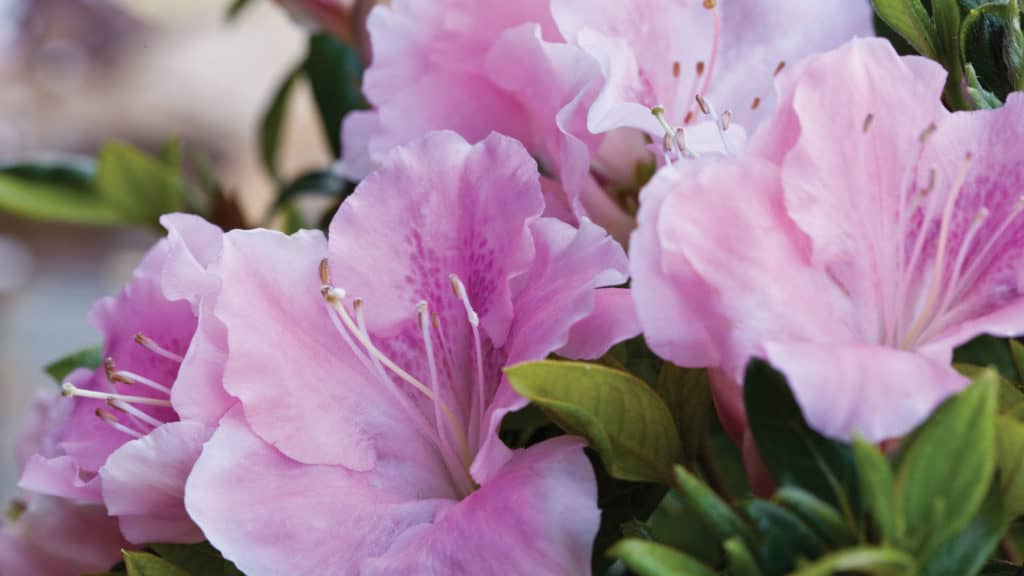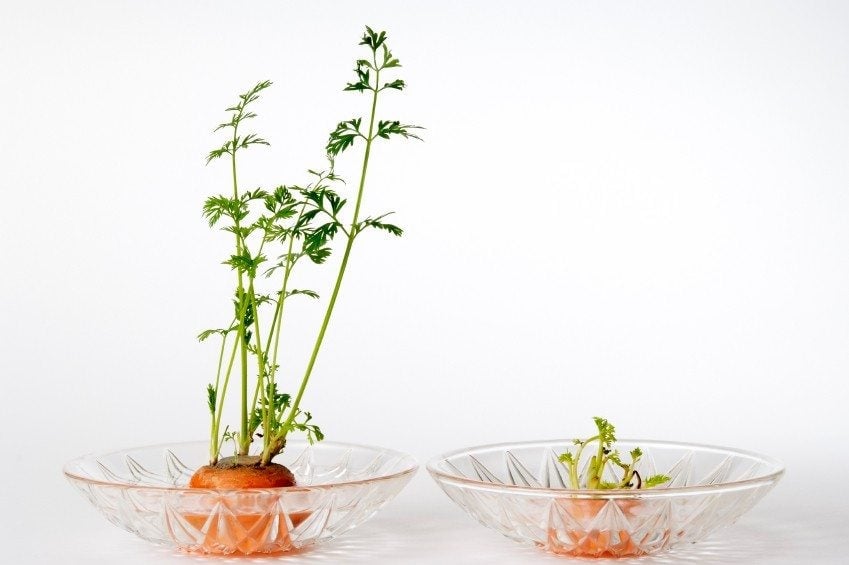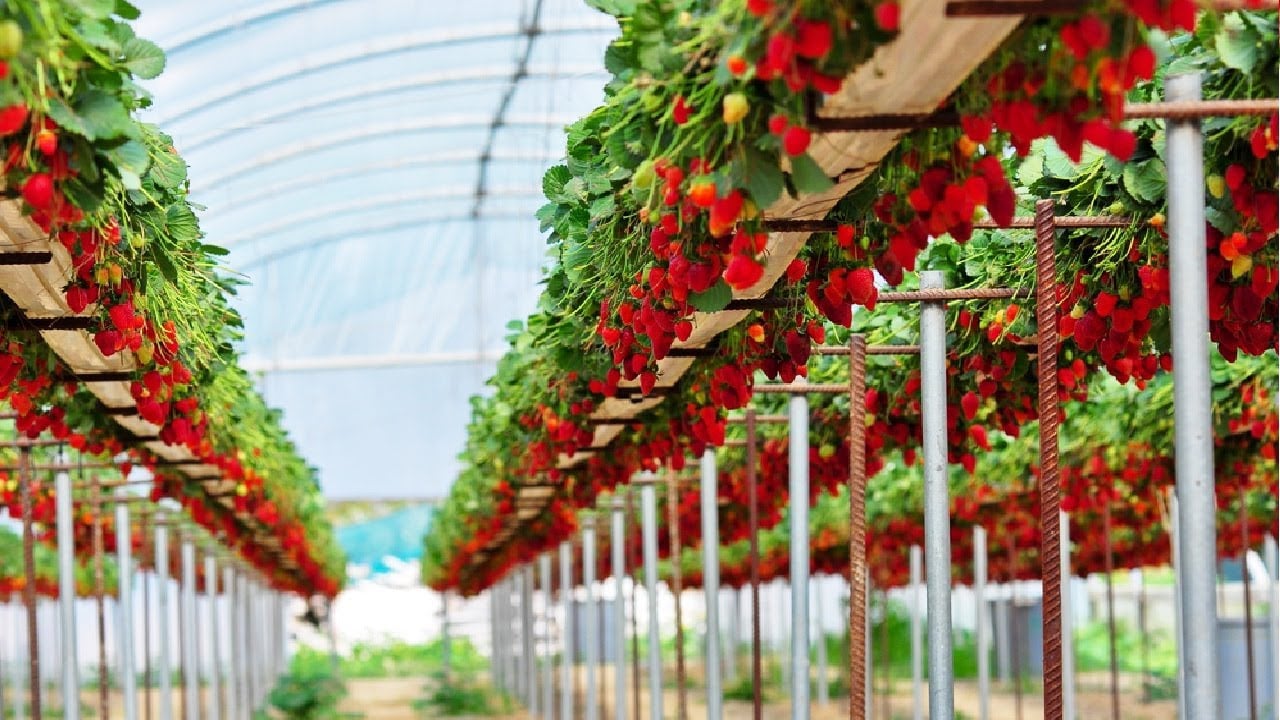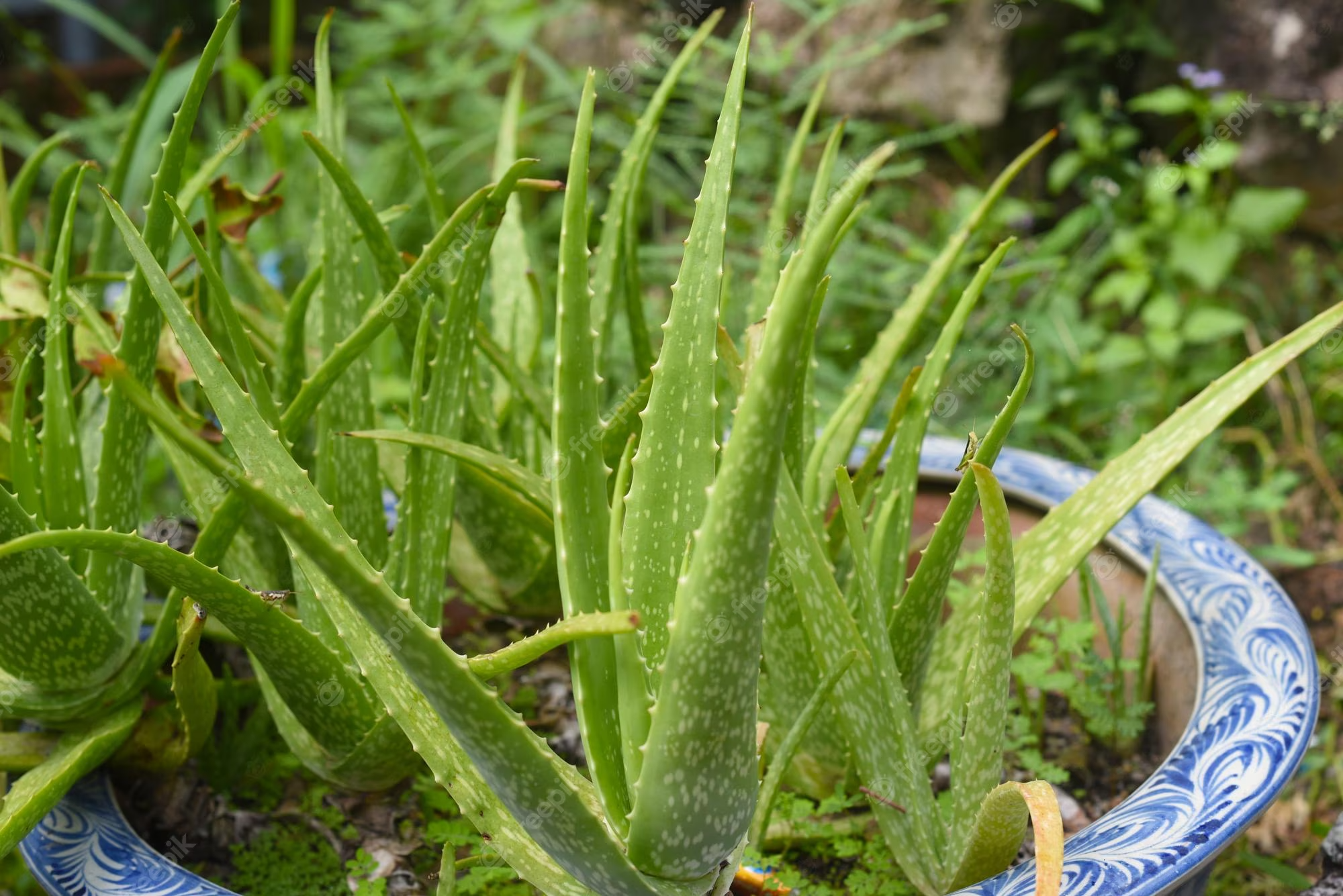How to Deadhead Geraniums Correctly: Tips and Tricks for Success
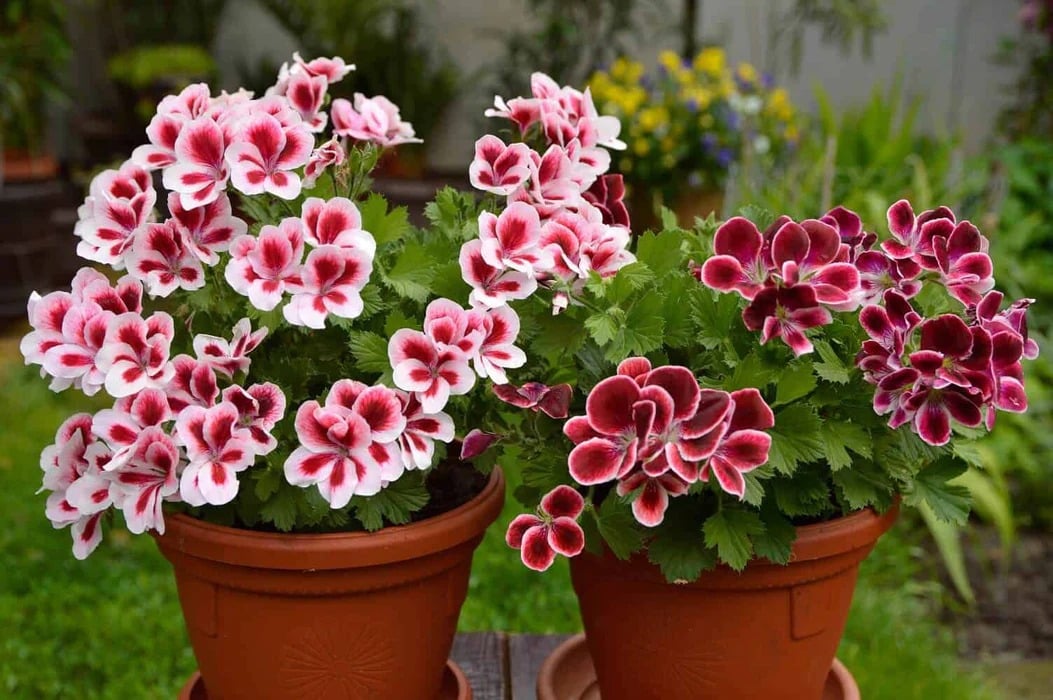
Table of Contents
We all love plants, trees, and flowers, which is very important for a balanced environment. We all think that once the plants get planted, we just need to give them water and proper sunlight. But apart from these, one more thing is needed, and that is removing dead leaves and branches by just using bare hands.
Yes! Just the bare hands. You might be thinking, what else can be done except pruning? Well, apart from pruning, there is one more step, and that is deadheading.
In this article, we will be learning how to deadhead geraniums. We will be discussing them step by step in detail. But first, let’s start this article by knowing about geraniums.
Geranium: Its Origin & Background History
Geranium, or cranesbill is a plant that is mostly found in South Africa’s subtropical regions. Hailing from the Geraniaceae family, this plant is a genus of 422 species. The leaves of this plant are green in colour. Whereas the flowers of this plant are seen in purple, blue, and white colours. The flower has a total of 5 petals which are palmate with narrow and pointed shapes.
If you look more closely at the petals, you will be able to see veining in a distinctive way.
There are no such criteria of soils for geraniums as they can grow in any type of soil. But make sure that the soil should not be waterlogged. You can grow this plant in your gardens in the spring season till fall, as it is considered the best time for it to bloom properly and beautifully. Speaking of its growth, it is considered a slow-growing plant as it takes from 12 to 15 weeks to begin flowering after planting seeds.
They can also grow in hot weather as they can tolerate heat properly. If they get proper sunlight, water, and maintenance, then winters can be tolerable for them too. Some moths, like ghost moths, brown tails, and mouse moths, are the eaters of this plant. You will be able to grow this plant in pots as well. Keeping them safe from the winds will make them shine and bloom well.
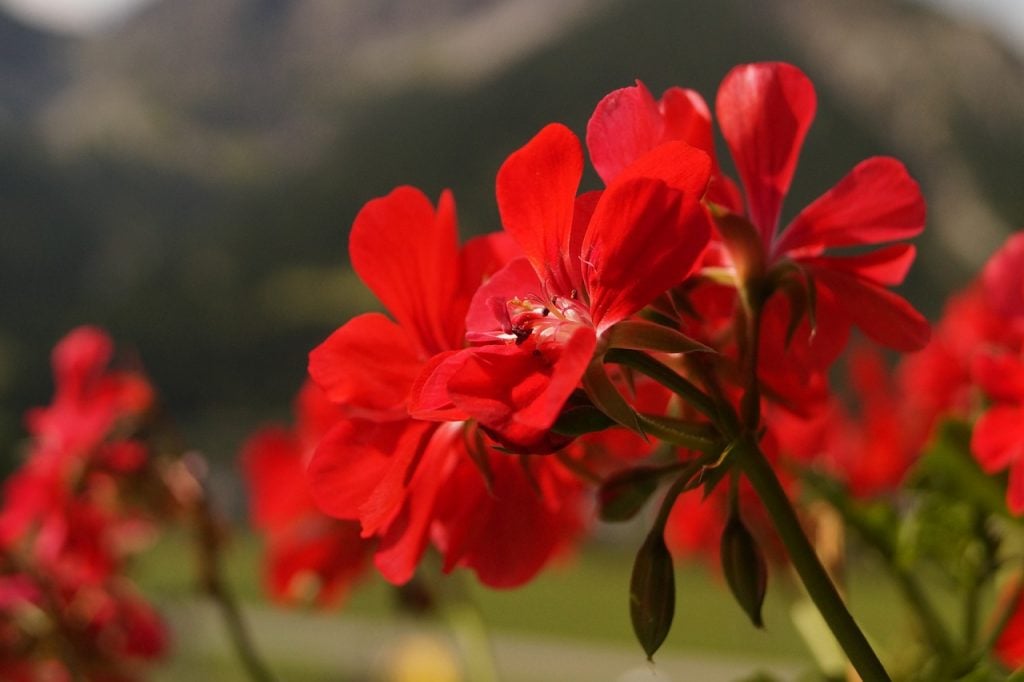
In the spring and early summer, you will have to apply fertilizer. But remember that you should not apply fertilizer in huge quantities as it will result in plant deterioration.
This plant requires less water after growing properly. Watering too much can give you the opposite results. Also, remember that you shouldn’t let the soil dry fully, so to prevent that, little watering is required. In winter, it is recommended that you should cut the plant and prune the roots and place them indoors. However, be careful to protect them from bugs and flies because they can be troublesome to this plant. They are spiders, mealybugs, caterpillars, and others.
Initially, this plant was in the members of Pelargonium, but later geranium got separated into two different genes. It was done by Charles L’ Heritier in 1789. Here I have listed 4 types of geraniums that are common to people who love them to plant.
How to Deadhead Geraniums?
By following the below-listed steps, you will be able to deadhead geraniums.
- Firstly, when you are going to remove the deadhead, make sure you have the right set of tools for it. In this case, you will need good and sharp secateurs or pruners.
- Secondly, search for the witted flowers and then cut the base of the stem of the flower with a pruner or a secateurs.
- Thirdly, if you don’t have a tool, then you can use your hands too. Just use a finger and hold the base of the flower stem. Hold with the forefinger and remove that node from the base stem of the flower very gently and cleanly.
- Do these steps only when the blooms are dried and dead.
Geraniums: Best Time to Deadhead This Plant
Deadheading is only done when the plants or flowers die. In this case, it is recommended that when the flowers turn brown in colour, then you can do it. You can also do deadheading when you see weak flowers grow for the first time.
Weather also plays an important role because you will have to depend on the weather to deadhead the flowers. It is also dependable on the plant’s blossoms as you have to check how good they are and how strong they are. You will have to do this process once started. You will have to do this often after a couple of weeks if you want to see a healthy tree with strong blossoms.
However, you will have to stop this process at a certain point in time. It solely depends on the one who has planted this plant and wants to stop further deadheading. If you want to see blossoms, then you can continue deadheading, but if you want the opposite, then you can stop deadheading when you see no blossoms appear. It is advisable you can stop this process once the blooming season ends.
Problems that Are Faced by Geranium Plants
Everything has a good part and a bad that we all know. Like other trees and plants, this plant also has some problems that it faces after it is planted. The problems that it encounters like pests, diseases, and other miscellaneous problems.
If you see a hole in that plant, then you will have to know that these holes are made by caterpillars. These creatures cut and chew the leaves in between August and September as it is their time to come out. Another problem is the rust on the leaves of this cute little plant. This is called Pelargonium rust, and it affects only the zonal parts of the leaves. The solution to this problem will be spraying fungicide or just removing the leaves will save the plant from further deterioration. You will have to keep in mind that spraying under the leaves and in compost will serve you the purpose.
Besides that, if you see any brown mark on the backside of the leaves which is making them deteriorate, then you will know that it is Oedema. These types of diseases happen when you over limit the watering process. However, this can be prevented by removing affected leaves from the other parts.
Yellowing geraniums can also cause a huge problem for the entire plant. This happens either by less amount of light reaching the lower part or insufficient water or drowning. Other than that, you might be tackling a problem if you have planted a geranium plant. This disease or disorder is called stem rot. This is nothing but a fungal infection that happens to a plant. Actually, when it is summer, and the heat is at a high level, then you might see this problem. Also, vine weevils and mice can cause your geranium to collapse. Flies and moths are a big problem for this plant. Sciarid flies are among those flies which cause trouble. These flies will damage the plant’s roots and thus will cause the plant to die.
Types of Geraniums
1. Ivy Geraniums
Ivy geraniums or Pelargonium peltatum is one type of geranium. Its height is about 48 inches. When you look at its leaves, they appear to be pink in colour with a pointed shape. However, you can also find them in red, purple, mauve and white colours.

2. Martha Washington Geraniums
These are also known as Regal geraniums. These geraniums have rounded and toothed leaves with round-shaped flowers. These flowers come in purple, pink, red, orange and reddish-black colours. These geranium plants reach a certain height of 48 inches.
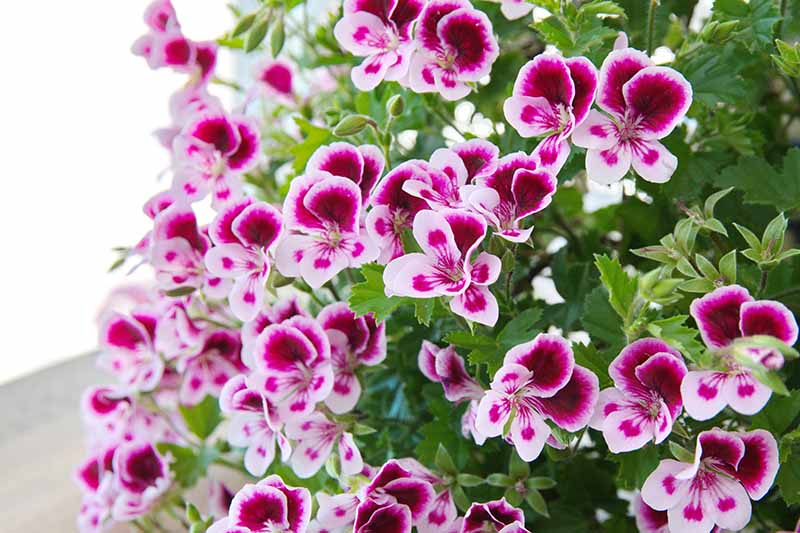
3. Angel Geraniums
These geraniums have flowers of striking pattern shape, which come in a purple and pink colour mixture. Its leaves are green in colour with a round shape. This plant reaches a height of up to 36 inches.
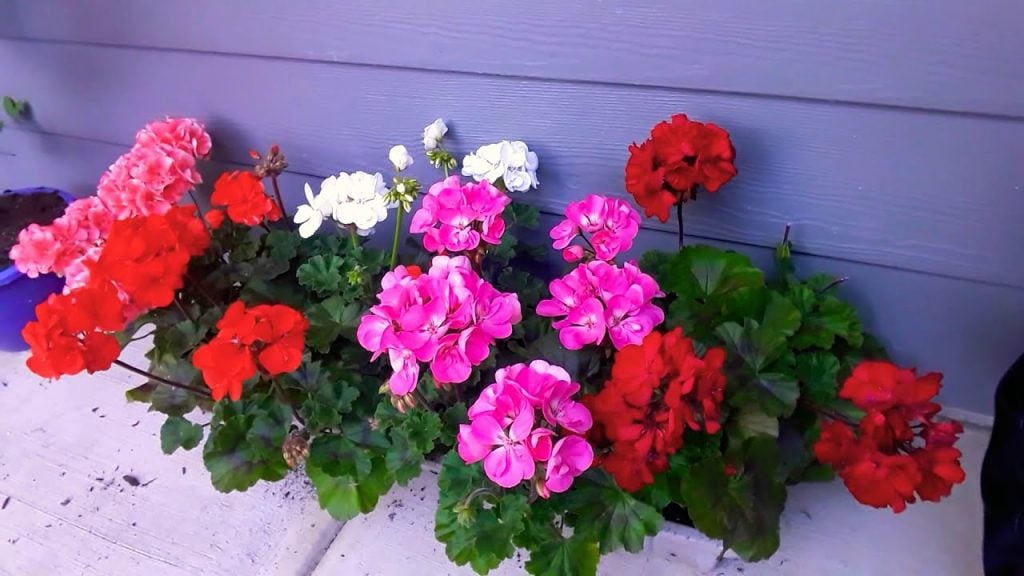
4. Zonal Geraniums
Zonal geraniums are also a kind of geraniums which have a height of 4 to 6 inches tall. The leaves of the plants are green in colour while its flowers are pink in colour and rounded in shape. These plants are also called Pelargonium zonale or Zonal Pelargonium.
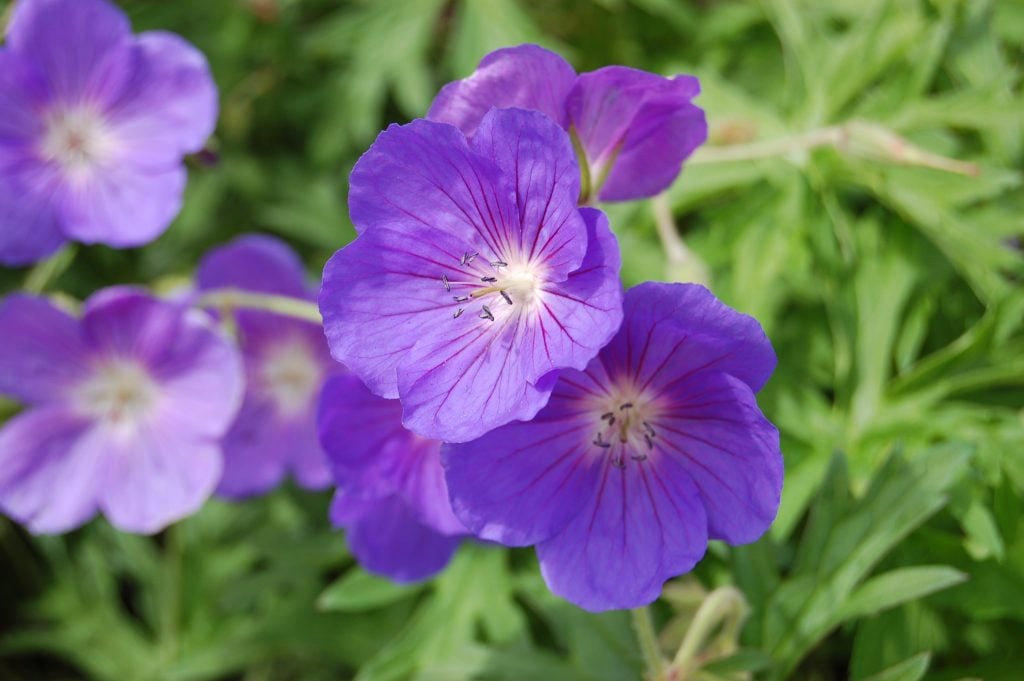
Some Cultivars of Geraniums
1. Orion
This is a cultivar of Geranium, which was found in the year 1990 in Holland. The colour of its flowers appears to be blue colour. Its flowers are about 5 cm wide. Also, with this, you will see some veins inside the flower, which are somewhat violet in colour.
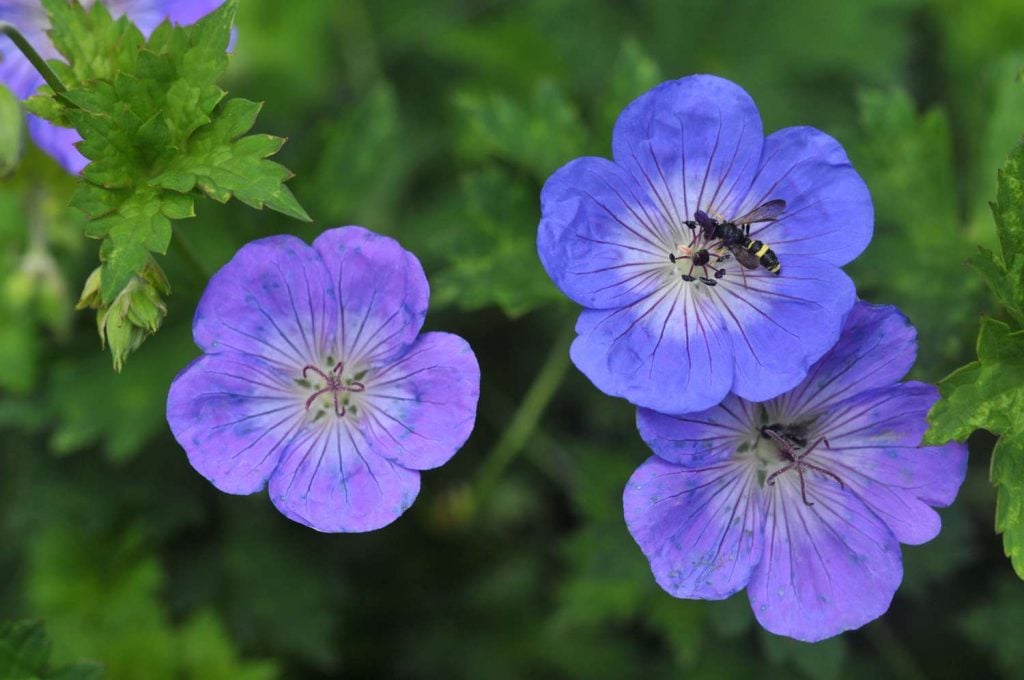
2. Rozanne
This is yet another type of cultivar of Geranium. Flowers of the plant bloom during the month of June to December. The colour of its flower appears to be blue colour.
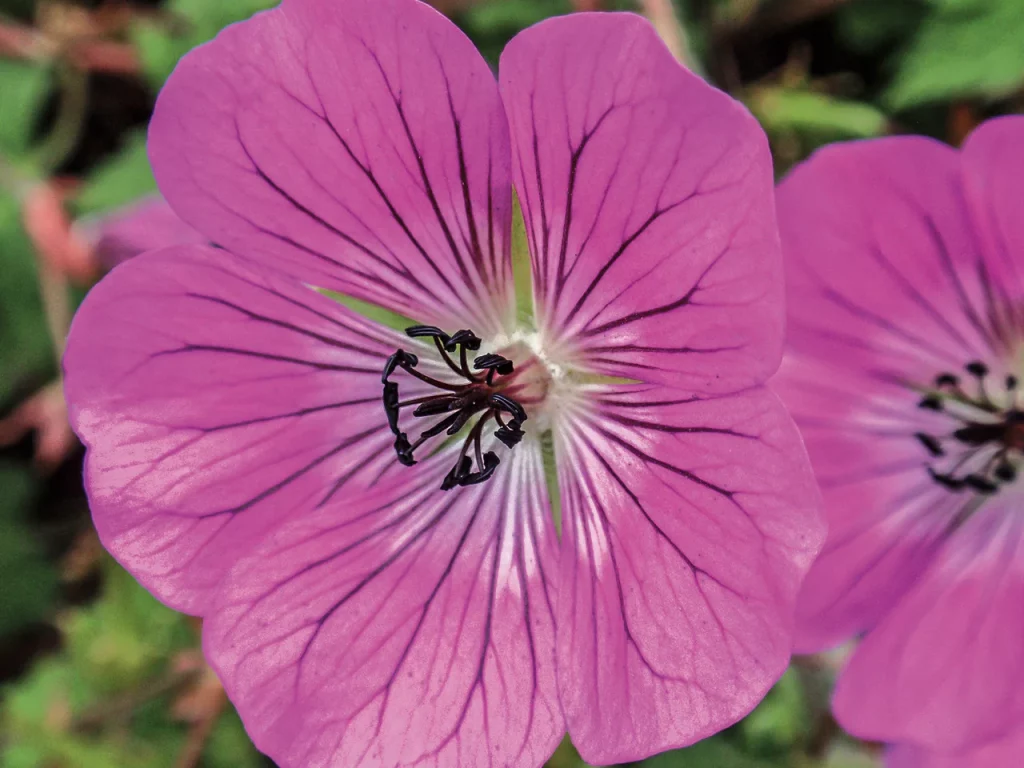
3. Rosetta
With violet in colour and darker veins in flower, you will be able to witness the beauty of yet another cultivar of Geranium. The flowers appear between June and September. The size of this plant is 40 cm.
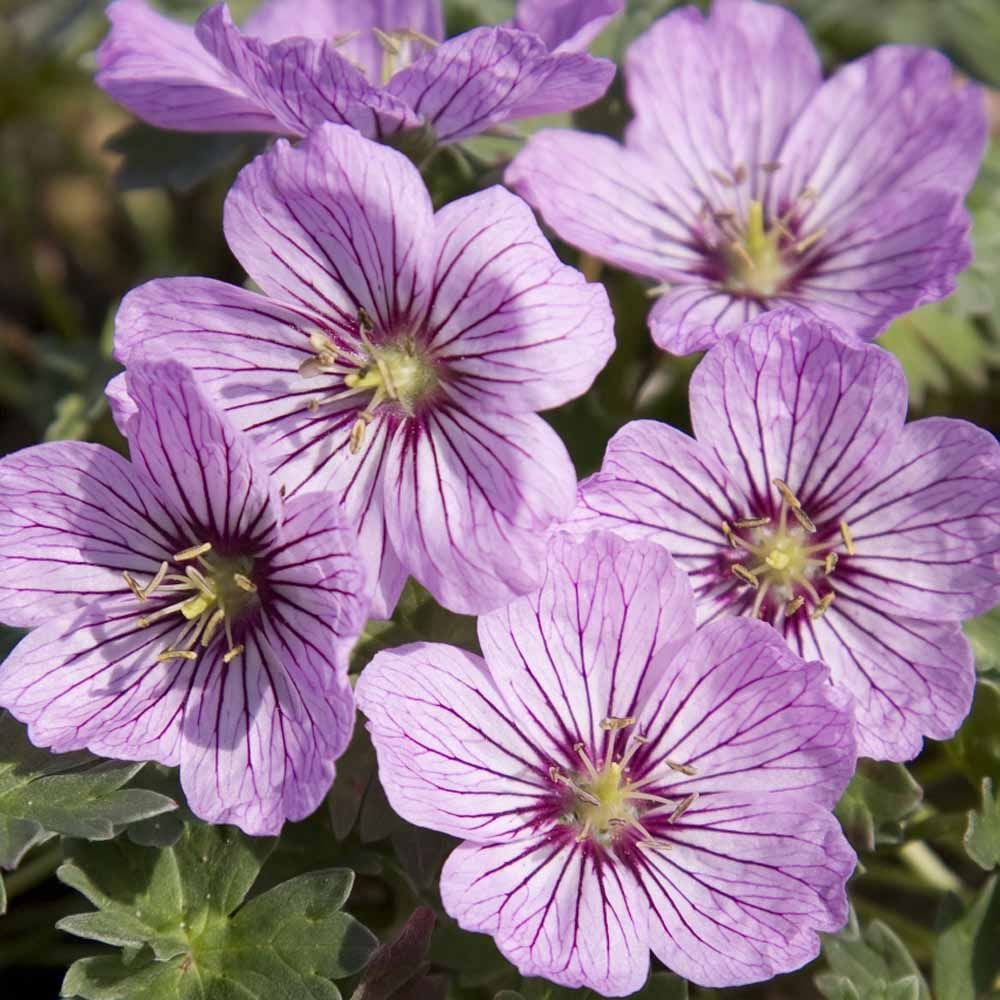
4. Alice
This plant is considered to be the largest flower plant of geraniums. These flowers appear to be pink in colour with dark violet veins. The size of this plant is 15cm. The leaves of the flowers bloom during a month period from July to September.
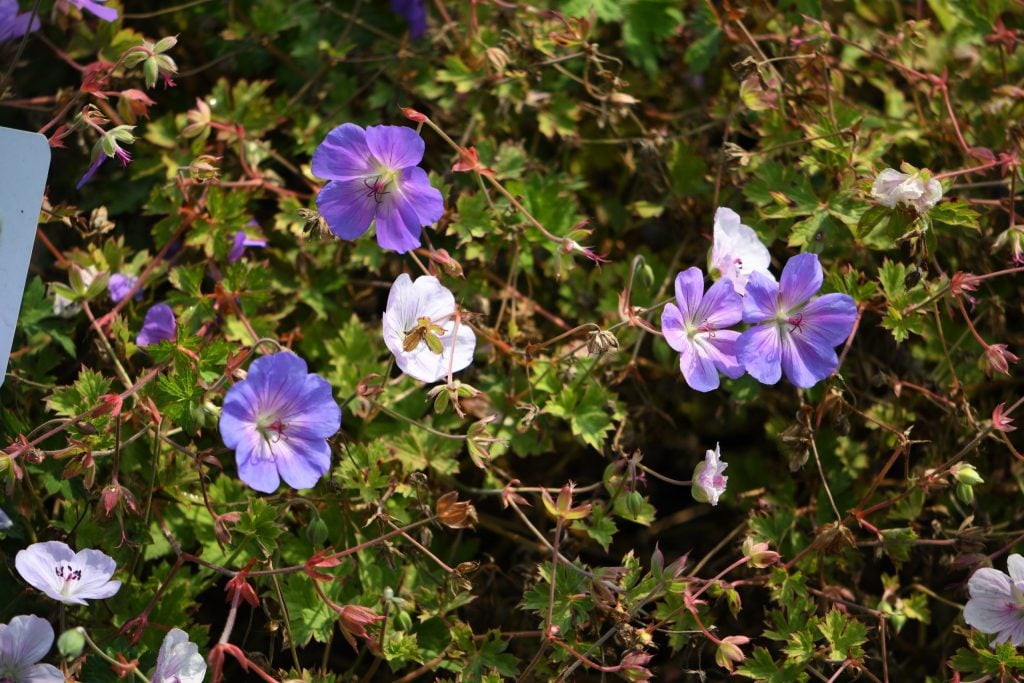
5. Lilac Ice
Lilac Ice is indeed a cultivar of Geranium. These are early-blooming, free-flowering plants, and they can endure extreme winters. The flowers bloom in the duration from June to September. This tree has a height of 40cm.
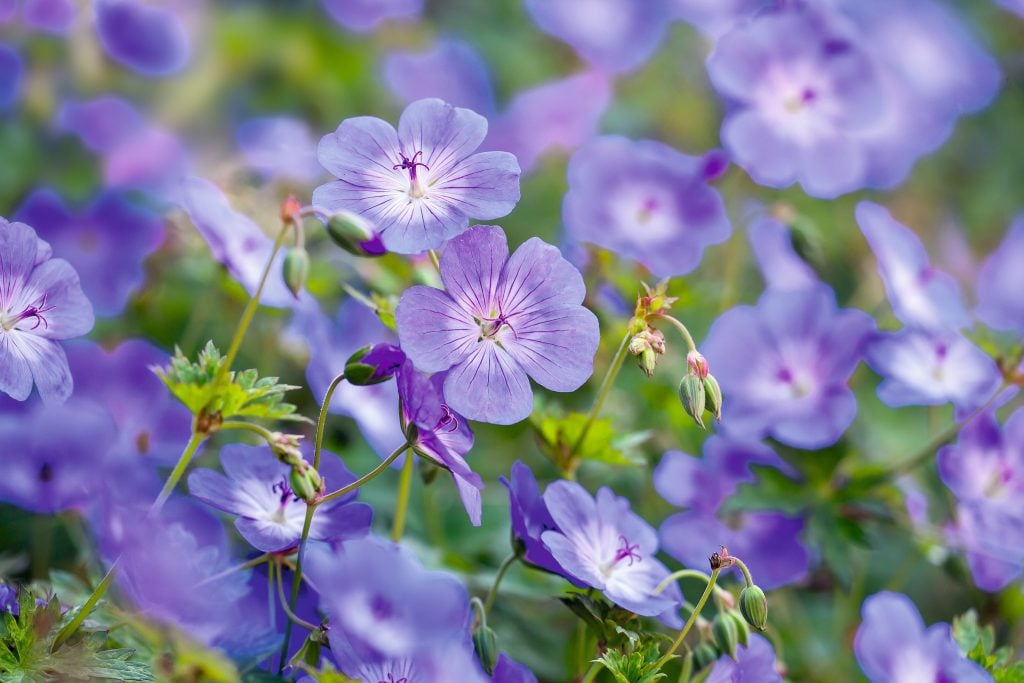
6. Havana Blues
This plant looks similar to Rozanne and Orion as its flower is blue in colour, and it has dark blue veins. Its height is about 35 cm. Due to its small size, its perfect to put on a bedside or even in a small-sized container.
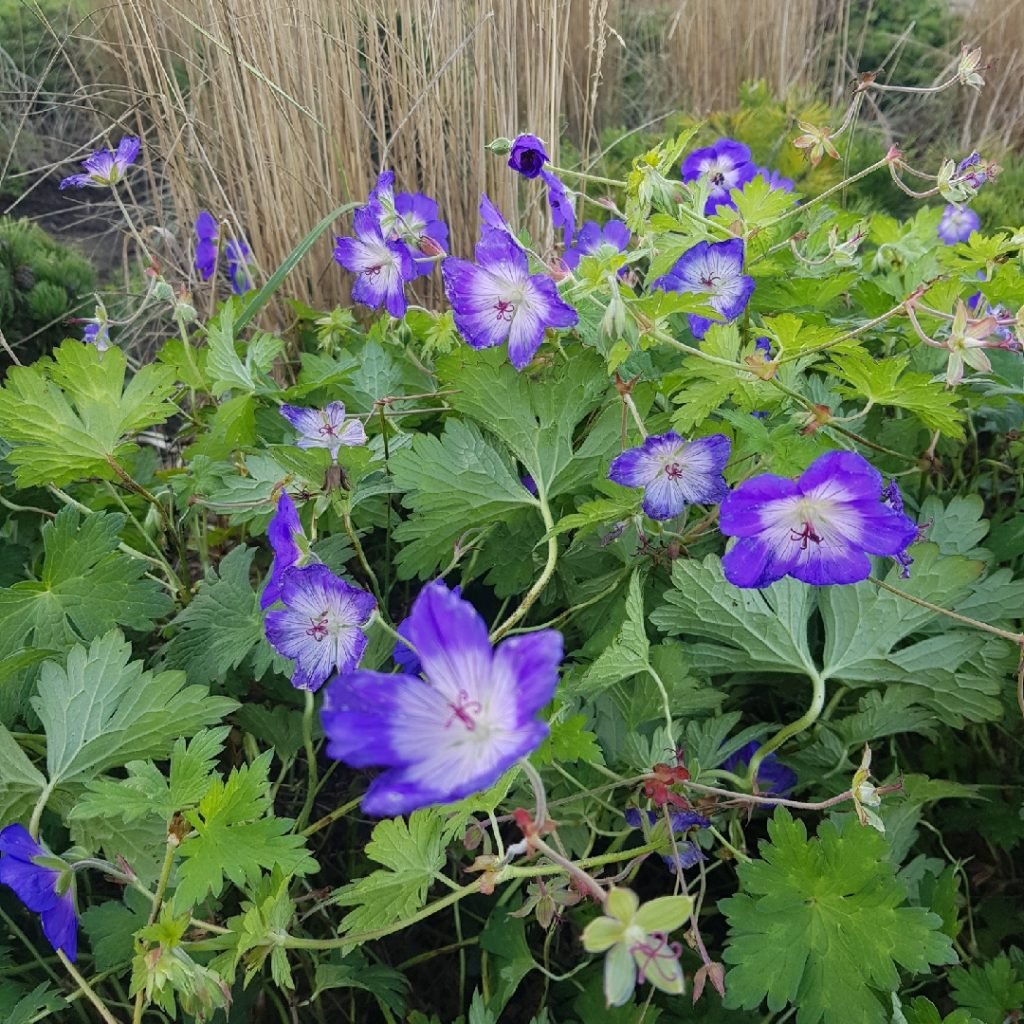
Final Thoughts
With that, we have come to the end of this article. Here we have learned about what Geranium is, its origin, and its background. Along with that, we have seen its varieties and cultivars. Along with that, we have learned how to deadhead the plant.
Always keep in mind that if you have geranium, you will have to do good maintenance of it by giving it proper water and sunlight along with some good fertilizers. On a concluding note, I will say that once you start doing deadheading, this process will continue until you permanently stop doing deadheading.
We hope this article proves to be worth useful and helpful. Do share your feedback with us regarding the deadheading process.

